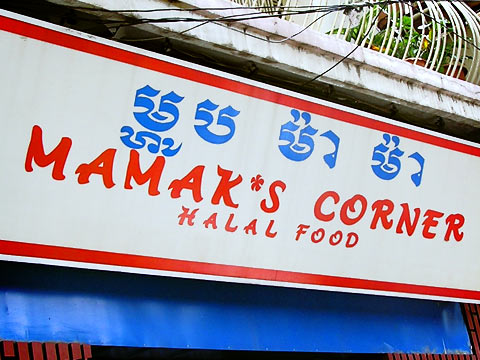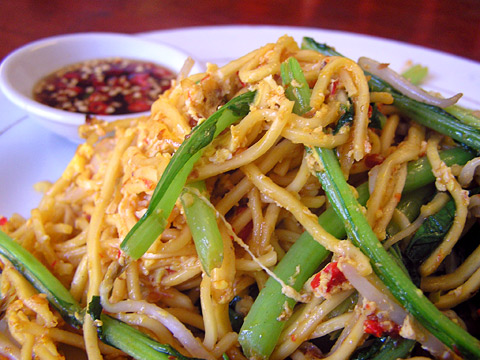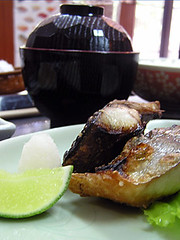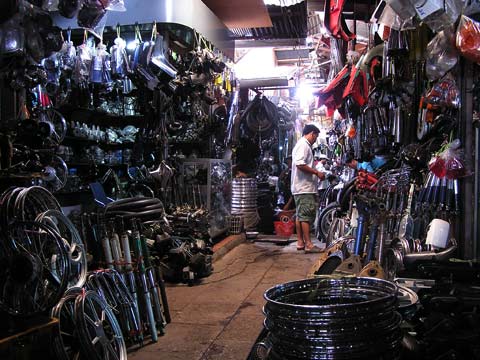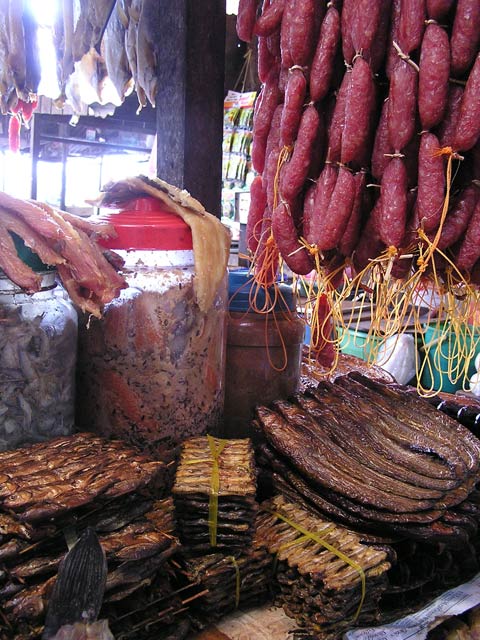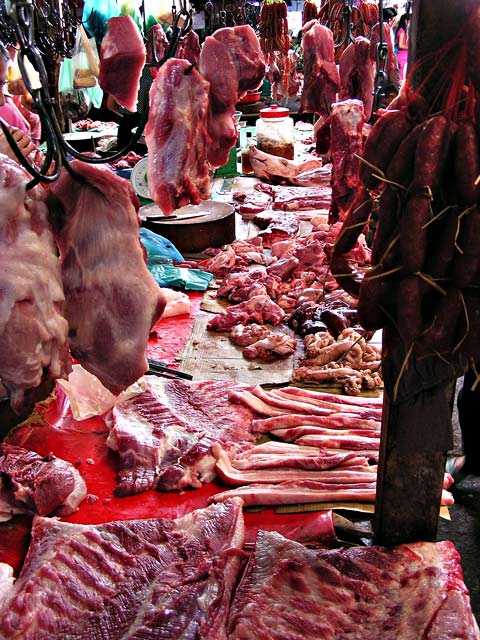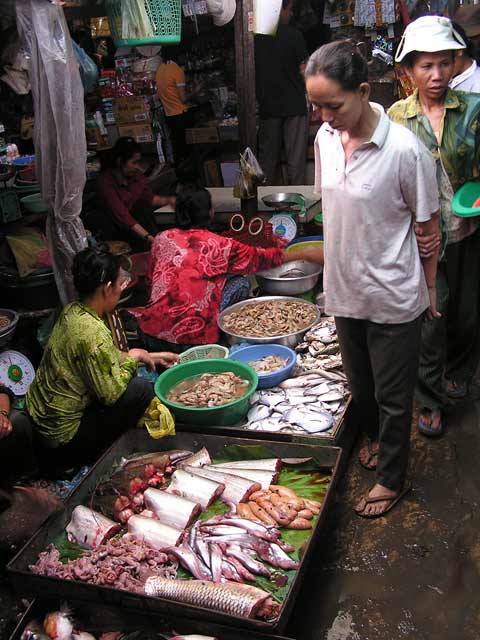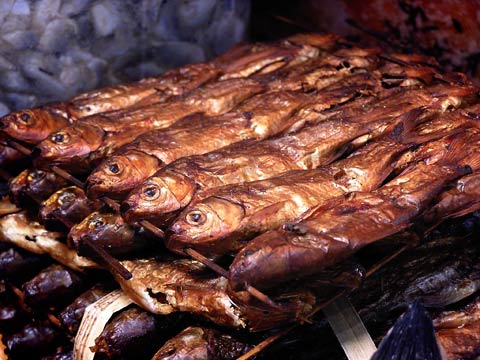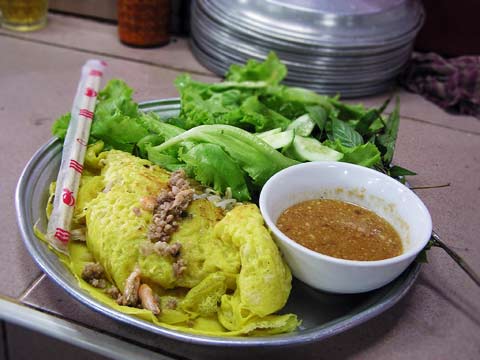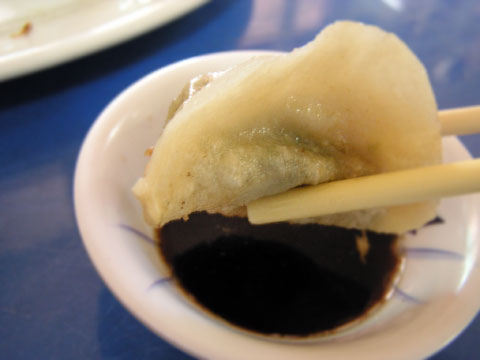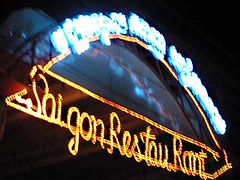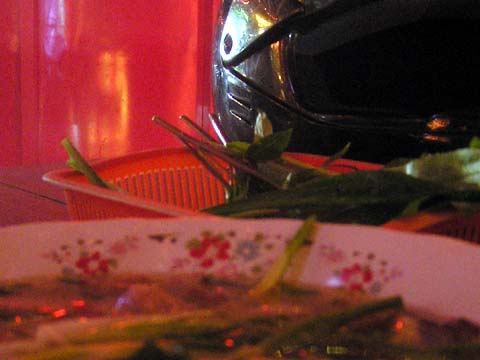I’ve had an excellent weekend of eating because I’ve had a friend in town who was up for an Ibero-Khmer food mashup and acting as an excuse to eat out for every meal.
Previously I’ve avoided Mali’s because of the large number of Black Landcruisers out the front. I’m convinced that if the ratio of Black to White Landcruisers is wrong, either the food is bad, expensive and over-Westernised (too many White) or the venue is actually a karaoke brothel (too many Black). Mali’s is in fact, neither. Khmer purists will inevitably point out that the food is both Westernised (i.e. the delicious Pumpkin Brulee; the general presentation; the lack of bones or napkins dropped on the floor) and under the fickle influence of Thailand (‘Ack! Lime leaves!’), but I’m a strong believer that absolute authenticity is for chumps. Eating in air-conditioned comfort during the hot season is a godsend.
You know that you are really settling into Phnom Penh when faux-Angkorean statues have the inability to look anything but cheesy and you have hot season fever dreams wherein you are chased by people with stone Jayavaraman heads or Rama’s deadly monkey army.The cheesiness at Mali’s is toned down a notch but I still can’t help but cringe at neon-lit Leper King statue at the entrance. It isn’t to my personal taste but as Edward Said sez ‘Since the time of Homer every European, in what he could say about the Orient, was a racist, an imperialist, and almost totally ethnocentric’. Bring it on.
Unable to cope with the postcolonial landscaping dissonance, we ascended the cantilever stairs into air-conditioned comfort. Our attentive, besuited waiter was particularly keen to pimp a langoustine tamarind-sour soup upon us, with which we had no truck. We opted for a round of cocktails while we perused the photo-rich menu.
After much discussion of the campness of the Side Car versus the Long Island Ice Tea as metonym for suburban housewife alcoholism, we agreed upon entrées of the small ‘natural scallops’ in rich glutinous sauce ($4.90) and the extra chunky prawn cakes ($4.90). Despite our waiter’s samla fetish, for mains, we shared one gigantic King Crab ‘fresh from Kep’ ($9.20) with my current favorite local ingredient: fresh green Kampot pepper; stuffed pork fillet ($4.80); and a falling-off-the-bone duck curry with a yellow kroueng sauce ($5.10) rounded out our five meat meal. We washed it down with a bottle of the reasonably priced Marsanne ($16).
There’s no denying that this is the most expensive Cambodian food that I’ve eaten in Phnom Penh, if not the most expensive Cambodian food available. I’m well past feeling guilty about eating a meal that adds up to the same amount as a coworkers monthly salary. If you’re keen to show that upscale Khmer food can fit into the Western paradigm of good food, Mali’s is probably the place to coax your foreign visitor, before you head downmarket.
Overall, I award the experience two Leper King arms and one Landcruiser out of a possible two.
Location: Just south of the Independence Monument on Norodom Boulevard. Yellow Pages.
I can’t believe it’s not patxaran
Pacharan is still Phnom Penh’s most talked about venue, if only because of the impact of walking up the stairs into the second-floor restaurant and feeling that ‘I can’t believe I’m in Cambodia’ sensation warm you like a glass of sloe and aniseed liquor. Its immaculate timber fitout, hammered copper features, custom artwork and stained glass in orange and yellow hues lend the stairwell and room a real warmth and depth of character that most Phnom Penh eateries sadly lack. It certainly isn’t like your average Spanish tapas bar but it is the only one with a view of fisherfolk floating down the Tonle Sap.
I’m glad we booked a table because by 8:00pm the room was packed and loud, with patrons being seated at the bar in wait. It is a strange sight to see waitstaff moving efficiently and at speed in Cambodia, but both were happening as the frantic open kitchen churned out Spanish morsels.
Service was not only quick but impeccable. Our thin wafers of manchego cheese, cheese-stuffed eggplant, albondigas, both the chicken and vegetable croquettes (all around $4 each) arrived within 10 minutes of our order; and our second jug of Sangria ($11) was refilled practically without needing to ask.
The big surprise for me was being served some rocket as a garnish. Rocket self-seeded in my tiny garden patch in Australia and grew at a rate that even the most maddened pesto fiend couldn’t pulverise it into a tasty pulp, before it outstripped my entire backyard. It not only had the ability to grow between the cracks in the pavement but could also materialise from the aether fully-formed. If I hadn’t left the country I believe that it would have achieved sentience and triffid-like defences by now. I realised that I had not tasted a single sprig of the peppery green since I left Australia more than a year ago and now it has returned to overrun Cambodge.
Pacharan might be the first tapas bar in Phnom Penh, but it certainly won’t be the last judging by the response from nearby businesses. K-West is holding a Spanish Week this week and Sa, next door to the Pacharan entrance, has already added tapas to the menu. Misguided stupidity is the sincerest form of flattery. I’m hoping that we’ll also be seeing a new era of Ibero-Khmer crossover: num anksom with Iberian ham, kroeung paella, prahok-stuffed olives and palm wine sangria.
Location: Corner Sisowath Quay and St.184. Enter on St.184. Yellow Pages.
